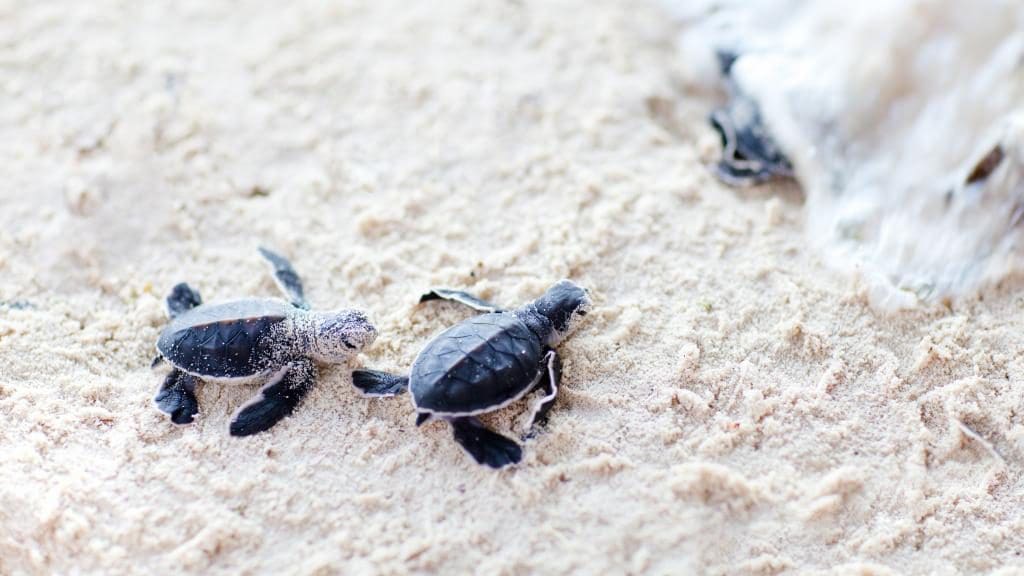Several species of wildlife become more active in the springtime for important needs such as migration, breeding, feeding and nesting. This increased natural activity often results in people being more likely to encounter our wildlife while enjoying the outdoors. To avoid disrupting important natural behavior and to prevent conflicts with native species in Florida, following some simple tips will help conserve wildlife during spring and beyond:
Injured and Orphaned Wildlife – Generally, if you find a young animal, such as a fawn or fledgling, it is best to leave it alone. Young animals are rarely orphaned; a parent may be nearby searching for food. You can report common wildlife you think could be injured or orphaned to a licensed wildlife rehabilitator.
Nesting Waterbirds – Shorebirds, sea birds and wading birds start nesting this time of year and you can help by keeping your distance while on the beach or on the water. If birds become agitated or leave their nests, you are too close. When on the beach, keep an eye out for and avoid shorebird eggs and chicks, which are well-camouflaged in shallow nests in the sand and shells. Wading birds, such as herons and egrets, and pelicans also are nesting now on mangroves and tree islands.
Bats – Bat maternity season, the time when bats start to give birth and raise their young, runs from April 16 through Aug. 14. During bat maternity season,s it is illegal to block bats from their roosts. If bats are excluded during maternity season, flightless baby bats could be trapped inside structures. April 15 is the last day to legally exclude bats from your home or building without a permit. This is the time to do final spring checks of your home for any entry points, ensure that no bats are present and make any necessary repairs. If bats are found, take steps to properly install a bat exclusion device before bat maternity season begins. Exclusion devices, which allow bats to exit a structure but block them from returning to roosts, are the only legal and appropriate method to remove bats from your home or building.
 Sea Turtles – These large marine turtles start nesting on Florida beaches in spring. You can help by keeping beaches dark at night and free of obstacles during their March through October nesting season. Artificial lighting can disturb nesting sea turtles and disorient hatchlings, so avoid using flashlights or cellphones on the beach at night. Turn out lights or close curtains and shades in buildings along the beach after dark to ensure nesting turtles aren’t disturbed. Clear away beach gear at the end of the day and fill in holes dug in the sand that could entrap turtles.
Sea Turtles – These large marine turtles start nesting on Florida beaches in spring. You can help by keeping beaches dark at night and free of obstacles during their March through October nesting season. Artificial lighting can disturb nesting sea turtles and disorient hatchlings, so avoid using flashlights or cellphones on the beach at night. Turn out lights or close curtains and shades in buildings along the beach after dark to ensure nesting turtles aren’t disturbed. Clear away beach gear at the end of the day and fill in holes dug in the sand that could entrap turtles.
Manatees – As manatees leave their winter habitats and travel the waterways along the Atlantic and Gulf coasts and other inland waters, chances of close encounters between manatees and boaters increase. Go slow and look out below for manatees when boating or using personal watercraft. For boaters and personal watercraft users, it is a critical time to be on the lookout for manatees to avoid collisions with these large aquatic mammals. Boaters should follow posted speed limits as many areas have seasonal zones in spring that reflect manatee migration patterns.
Bears – As spring temperatures warm, bears become more active. During this time of year, females are teaching their cubs what to eat and the skills necessary to survive. To help prevent conflicts and make sure that eating garbage, pet food or bird seed in your yard is not part of that learning experience, remove or secure attractants around your property. If bears can’t find food sources in your yard or neighborhood, they will move on.
Gopher Tortoises – Florida’s only native tortoise becomes more active this time of year, foraging for food and searching for a mate. If you see gopher tortoises or their half-moon shaped burrow entrances, it is best to leave them alone. Spotted a gopher tortoise crossing a road? If it is safe to do so, you may move it out of the road in the direction it was heading (but don’t put the tortoise in your vehicle). Remember the tortoise is a land animal that can’t swim, so never attempt to put it into water.
Snakes – Keep an eye out for our native snakes in your yard or when hiking, as they could be encountered more as the weather warms. What should you do if you come upon a native snake? Just give it space, as snakes usually try to avoid encounters.
Wildlife and Roads – With increased wildlife activity, keep an eye out for animals crossing roadways, including larger species such as Florida panthers, bears and deer. Slowing down and obeying all posted speed limits, particularly in panther zones and areas with road signage identifying known wildlife crossings, helps keep you, other motorists and wildlife safe.
For more information, visit MyFWC.com/News and click on “Spring Wildlife News.”
If you witness someone committing a wildlife violation, contact the FWC’s Wildlife Alert Hotline: 888-404-FWCC (3922) or text 847411 (Tip411) with keyword “FWC” and information about the violation.
The post Wildlife Is More Active in Spring appeared first on South Walton Connections.


Be the first to comment on "Wildlife Is More Active in Spring"